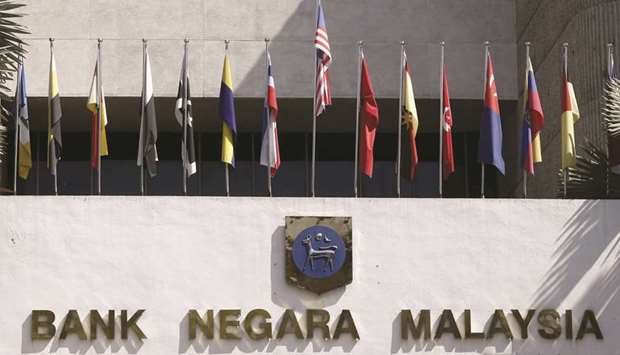Malaysia’s central bank yesterday became the first in Southeast Asia to cut its key interest rate this year, moving to support its economy at a time of concern about global growth.
Bank Negara Malaysia (BNM) cut its overnight policy rate (OPR) by 25 basis points to 3%.
Malaysia’s cut – its first since July 2016 – reflects changes in global interest rates and the monetary policy of many central banks in the last six months, and particularly since the Federal Reserve said it did not plan any hikes this year.
The Fed’s four increases in US rates in 2018 had led some Asia-Pacific central banks to increase their benchmarks, and its pause has given them more room to cut, if they wish.
More central banks in the region are “adopting a more dovish outlook,” said Julia Goh, a Malaysia-based economist with UOB Bank.
Hours before Malaysia cut, the Reserve Bank of Australia stood pat, though a hike later this year is expected.
New Zealand’s central bank might cut today, and Goh anticipates the Philippines, which has seen inflation cool sharply, to trim its rate tomorrow.
BNM said its cut was “intended to preserve the degree of monetary accommodativeness”.
“This is consistent with the monetary policy stance of supporting a steady growth path amid price stability,” it said.
Seven out of 13 economists polled by Reuters had expected BNM to cut its benchmark rate to 3%.
Malaysia’s change was the first since January 2018, when the key rate was raised to 3.25% to “normalise” policy. “With economic growth likely to remain weak throughout 2019, today’s rate cut by the central bank in Malaysia is likely to be followed by further easing later in the year,” Alex Holmes of Capital Economics said in a note.
Holmes said a second cut is likely on weak inflation and poor full-year growth in 2019, which Capital Economics projected at 4%.
In March, BNM cut its 2019 economic growth forecast to 4.3%-4.8% from an earlier projection of 4.9%, on expectations of a significant drop in export expansion.
For the whole of 2018, Malaysia grew 4.7%.
It will report the first quarter growth on May 16.
On an annual basis, exports shrank a second consecutive month in March, declining 0.5% on weak demand for commodities.
Goh of UOB said concern over external trade risks likely spiked after US President Donald Trump threatened additional tariffs against China.
In Malaysia, according to Bank Islam chief economist Mohd Afzanizam Abdul Rashid, economic growth could be helped by the rate cut and the government’s decision to revive two China-linked multi-billion dollar projects.
“It’s a kind of medium-term story that should translate to a better ringgit,” Afzanizam said.
The ringgit, one of the worst performers in the region this year, dipped to around 4.1530 against the dollar after BNM announced its rate cut.
It has weakened about 0.3% against the dollar this year.
BNM said “considerable downside risks to global growth remain, stemming from unresolved trade tensions and prolonged country-specific weaknesses in the major economies, further dampening global trade and investment activities.”

A general view of the Bank Negara Malaysia in Kuala Lumpur. Malaysia’s central bank cut its overnight policy rate by 25 basis points to 3% yesterday.
